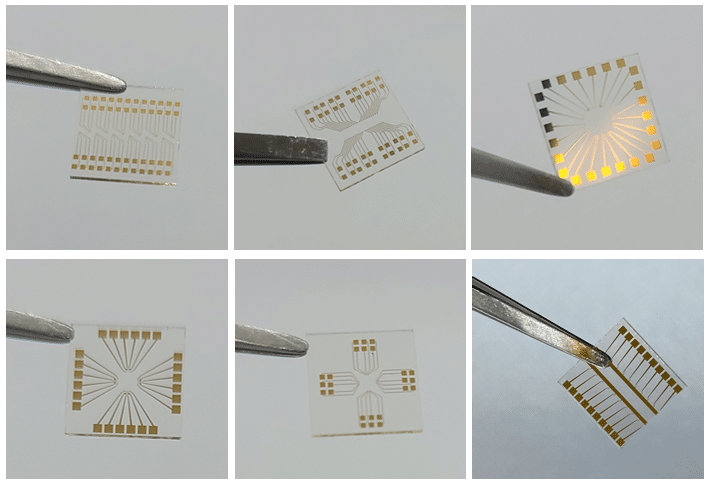Biological Testing with Patterned Electrodes
Characterizing and testing biological samples can be done through patterned electrodes. The overall structure and quality of an electrode can either enhance or impinge on sampling results. An ideal electrode design should attain a high signal-to-noise ratio (SNR), a low electrode impedance, and display resistance to harsh biological environments. Current generation and transportation depend on the metal coating present on an electrode surface.
Patterned electrode designs such as interdigitated array’s, field effect transistors (FET), and lab-on-a-chip, have been shown to generate critical results in biological testing applications. Common applications include electrochemical analysis, electrochemical impedance spectroscopy (EIS), measuring action potentials, and cyclic voltammetry (CV).

An electrochemical analysis, electrowetting (EW), is commonly performed with lab-on-a-chip electrodes. EW represents a reversible method to control fluids on a surface through applying an electric field. Applying an electric field in turn alters the contact angle of a liquid. This method requires a hydrophobic surface with low surface energy and serves as an insulator. Hydrophobic surfaces often consist of fluoropolymers like Teflon, which have a low absorbance. Metal contacts on an electrode serve to initiate surface charging which is used to induce fluid wetting.
Electrochemical impedance spectroscopy is a tool that can measure polarization and solution resistance, as well as double layer capacitance. As the name suggests, EIS measures the impedance of a metal to solution interface. Impedance measurements can then be used to generate Bode plots which determine how input signal frequencies are transferred over a solid-liquid boundary. Since biological signals consist of a broad range of frequencies, it is crucial to utilize a method that captures all these ranges. Relatively low impedance values correspond to higher signal-to-noise ratios. Smaller electrode features can enhance signal amplitude which contributes to enhancing a SNR. The proximity of the electrode to a biological sample also has a significance on signal quality. The closer an electrode is to a sample; the higher signal quality will be produced.
Action potentials are generated through cellular stimulation in which depolarization and repolarization can occur. In order to record action potentials, microelectrodes are used. During depolarization, the membrane potential goes from negative to positive otherwise known as electropositive. Repolarization occurs when the cells lose positive charges therefore becoming electronegative. Both depolarization and repolarization often produce higher frequencies.
Cyclic voltammetry represents another test that can be used to monitor for charge transfer reactions that occur at the surface of an electrode. CV tests measure current flow and are commonly conducted to test redox reactions. This method can also be used to identify the formation of self-assembled monolayers (SAMs) on an electrode surface. Working, counter, and reference electrodes represent the tools necessary to produce CV measurements.
Platypus Technologies will soon be offering new patterned electrode designs that enable a range of biological testing applications. New designs include interdigitated electrodes and arrays, FETs, lab-on-a-chip, and four and six probe electrodes. Contact us today to inquire about these newly developed electrode designs!